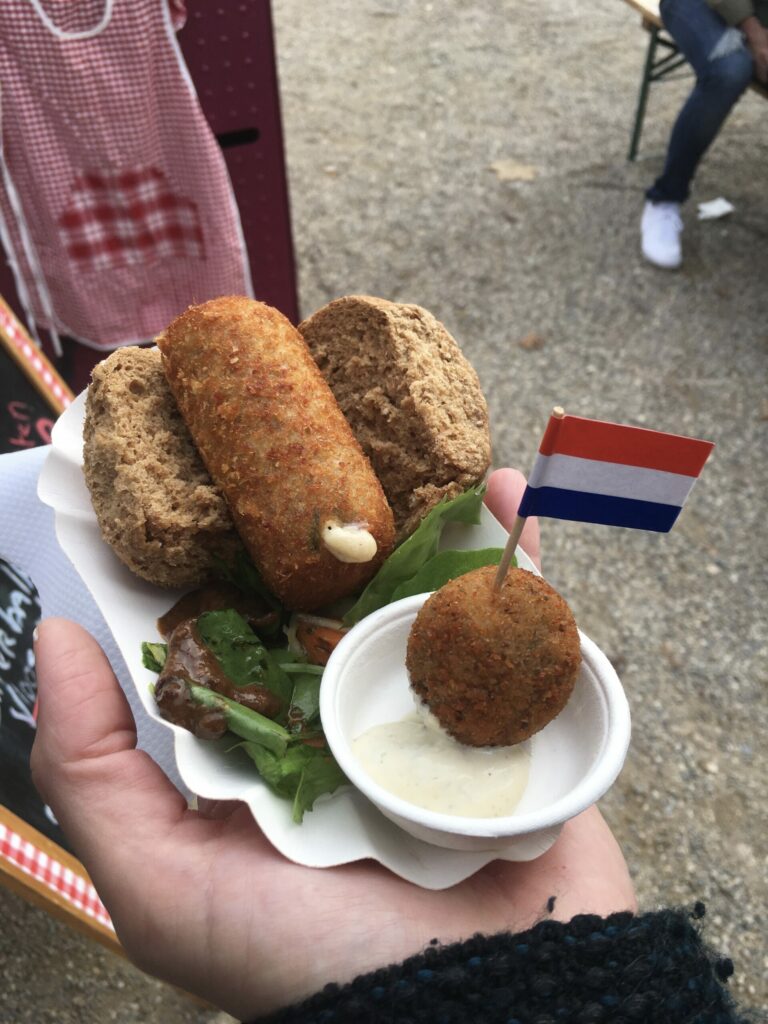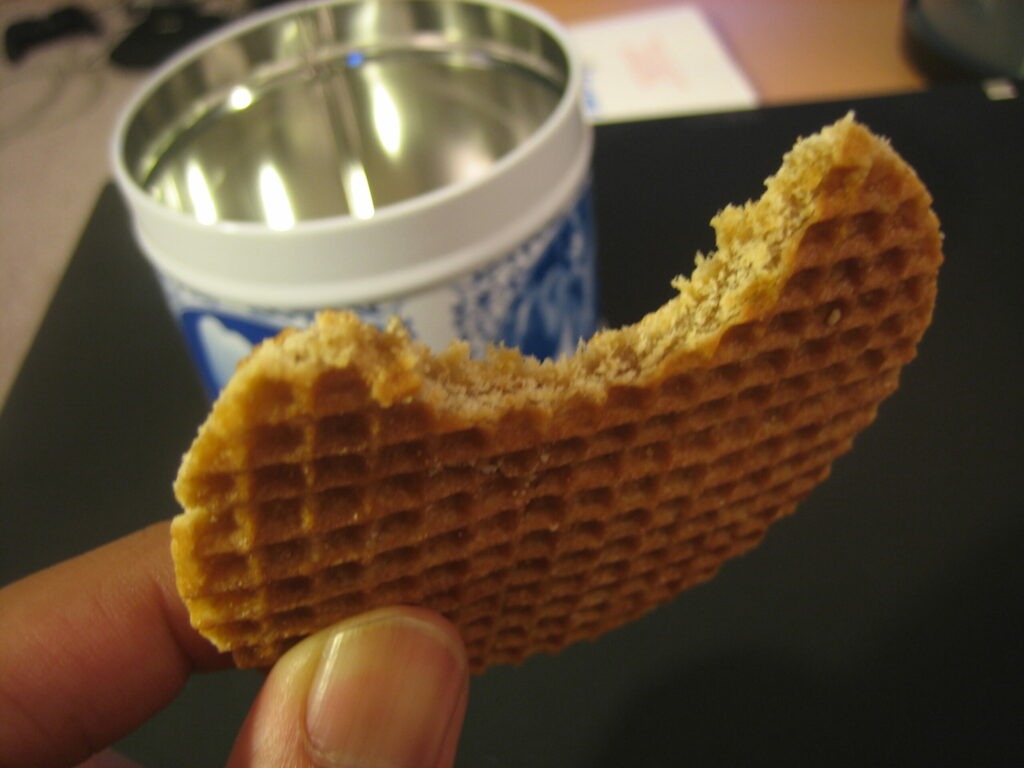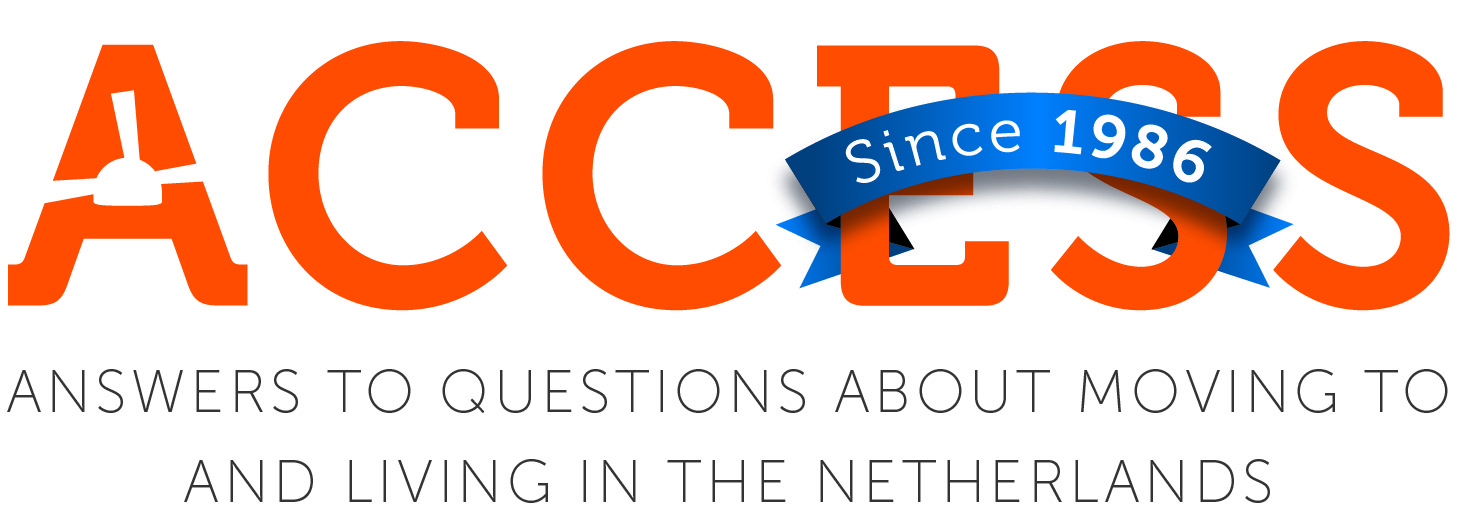ACCESS NL > Features > Dutch cuisine: A street food called desire
Dutch cuisine: A street food called desire
2021-03-16 | By Kim van der Velden
According to a 2014 Oxfam study, the Netherlands ranked as the number one country in the world for having the most plentiful, nutritious, healthy and affordable diet. It seems the healthy focus of Dutch meals– sometimes accused of blandness in flavour–is offset by a guilt-free and full-flavour approach when it comes to the snacks eaten in between.
History of snacks in the Netherlands
Snacks or street food as a social and cultural phenomenon arose in the 1950s, when more people began working in cities, away from home, and needed to have a quick lunch. The Netherlands does not have a culture of enjoying long big lunches, so the meal needed to be nourishing and quick. Bakeries and butchers were the first to set up special counters to cater for these needs with warm snacks and filled sandwiches. The country’s famous snack bar franchise chain Febo was originally a bakery in the Ferdinand Bolstraat (hence FeBo) in Amsterdam, that began by specialising in kroketten made to grandfather’s original recipe.
Dutch street snacks
There is plenty of Dutch street food to choose from, so next time you see a local snack bar or food stall, give it a go. But make sure you counter balance with a healthy stamppot in the evening for dinner! Here is some of my favourite Dutch street food.
Rookworst (smoked sausage)
HEMA’s rookworst is by far the best known–you cannot miss the lunchtime queues around some stores, proving its popularity. While living in France, I admit I really missed the rookworst. The famous HEMA sausage also now has as a vegetarian variant, made of vegetable oils, pea fibre and protein.
Poffertjes (mini pancakes)
Probably the all-time favourite of all kids, big and small. Fluffy mini pancakes the size of a two euro coin, served with butter and icing sugar. Poffertjes originated from a Catholic tradition in the south of the Netherlands, where sacramental hosts were used during communion. During Napoleon’s occupation, monks were forced to use buckwheat because of a shortage of wheat flower, which caused the hosts to become hard and dry. So the monks started culinary experiments, added yeast, and poffertjes were born.

Kibbeling (battered chunks of fish)
This warm and savoury snack can be found at almost every local fish stall and is served with a mayonnaise-garlic or tartar sauce. The snack was invented in the 19th century to use up the salted waste of the–back then–inexpensive codfish. Given current prices for cod, other types of white fish are probably now used for kibbeling.
Broodje haring (pickled salty herring on a bun)
Herring is the most likely best known Dutch snack, probably because of the unusual, customary way of eating it–vertically lifted above the tilted head of the eater, taking big bites from a raw, grey, fish dipped in raw onion. For a more sophisticated way of eating, try the fish on a white bun with pickles and onions.
Saucijzenbroodje (sausage roll)
This is a classic the Netherlands has in common with many other countries, sausage rolled in puff pastry. Many bakeries and butchers have their own homemade versions, great for a cold day when you feel hungry. Nowadays many places have equally tasty vegetarian versions.
Oliebollen (deep-fried doughnut balls)
The modern American doughnut is generally traced back to the oliebol that Dutch settlers brought to early New York (then New Amsterdam). Fluffy dough balls, deep-fried, with lots of icing sugar, oliebollen are a seasonal snack, the Dutch eat with a glass of champagne on New Year’s Eve. Starting in late October/early November oliebollen stalls begin to appear across towns.
Stroopwafels (caramel-filled crispy waffles)
While living abroad, I really missed the fresh version you can only get at a stroopwafel stall in the Netherlands. The smell and taste of the warm caramel between the crispy, fresh thin waffles cannot be replicated anywhere else. Nothing is as good with a cup of tea or coffee.
Appelflap (apple in puff pastry)
Another snack eaten on New Year’s Eve, but can also be eaten throughout the year, this is made of apple pieces, with sugar, cinnamon and raisins in puff pastry.
Kroket or bitterbal
Kroketten and bitterballen are the same, but in different shapes. Consisting of a meat-stewed ragout filling, in a deep-fried breadcrumb crust, the kroket has a cylindrical shape and the bitterbal has a ping pong ball shape. The fatty, savoury taste means they go well with alcoholic beverages, and are often ordered during after-work drinks. The origin of the word bitterballen comes from when they were often combined with an herb-flavoured spirit called bitter in Dutch.
Want to learn more about Dutch food? Check out these interesting articles : Dutch Food: With love from Limburg, Popular Dutch Winter food : From the Netherlands with love, Dutch plant-based: Blooming delicious, Netherlands: Pioneering food innovation

About the author
Language and food being Kim van der Velden’s favourite things in life, she hopes that you enjoyed reading this article as much as she enjoyed writing it.


